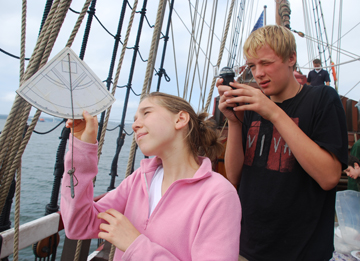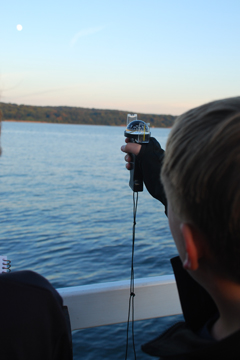 |
|
|
|
|
|
|
On this Voyage of Discovery, two seperate student teams chose to utilize celestial tracking for their presentation projects. Greg and Ross took on the challenge of tracking the Moon's course throughout the night, while Andrew and Lizzie chose to track the Sun. Unfortunately, overcast skies would ultimately force Greg and Ross to abandon their project in favor of a more controllable topic. By tracking the Sun, we can determine local true noon (the point at which the sun is highest in the sky), which can differentiate from the local standardized time by nearly up to an hour, depending on one's location in a time zone. In the northern hemisphere, the direction of the Sun at local true noon in turn determines due south. The difference between the Sun's bearing and magnetic south is called the Sun's azimuth; thus, a celestial navigator could use a quadrant and the Sun's azimuth to calibrate a compass. Of course, overcast skies can prove a serious annoyance, since they hide a navigator's celestial reference points. This holds true whether you're just trying to observe the sun for a project or a sailor lost at sea in the Northern Atlantic. |
|
| |
|


